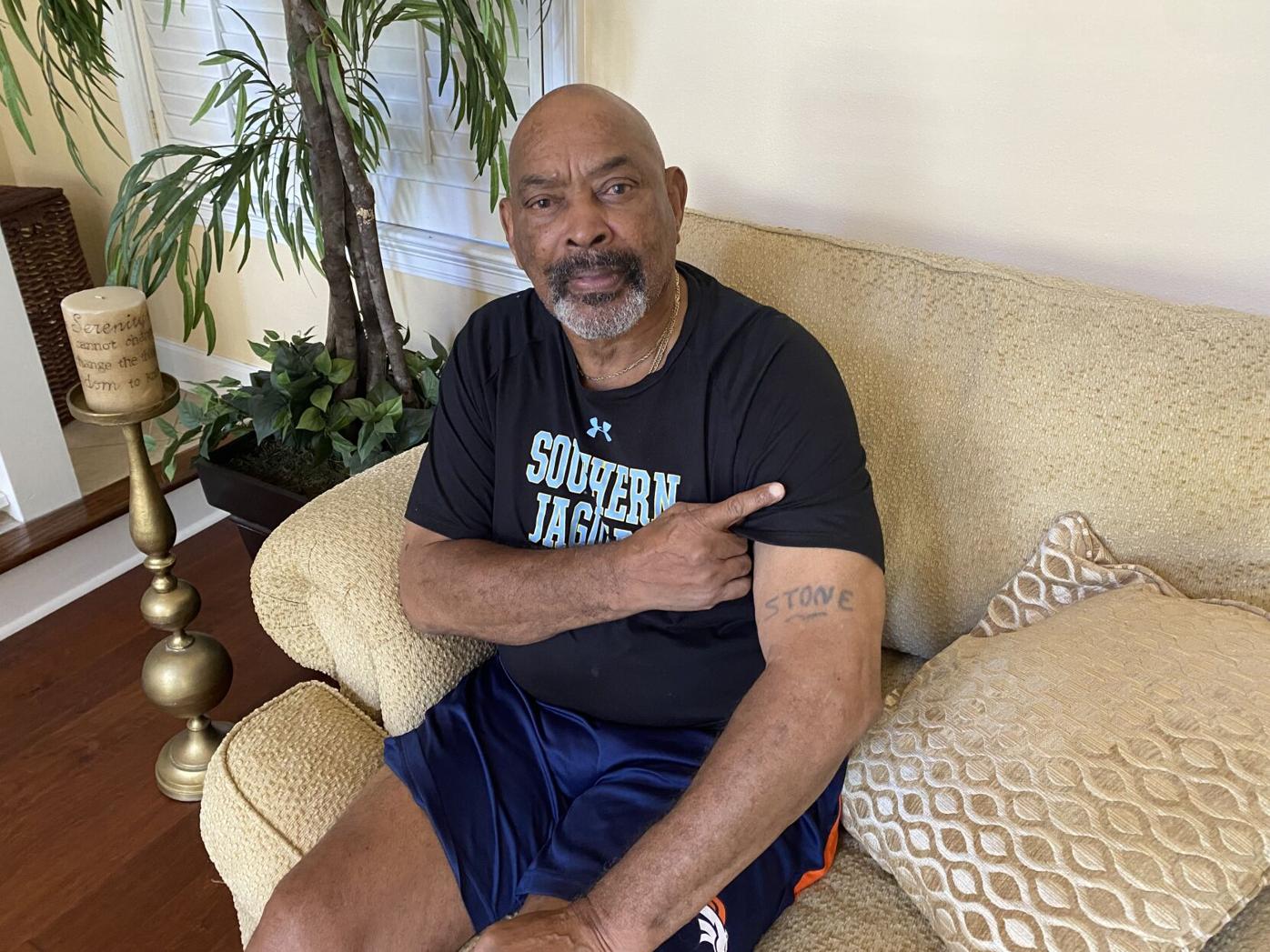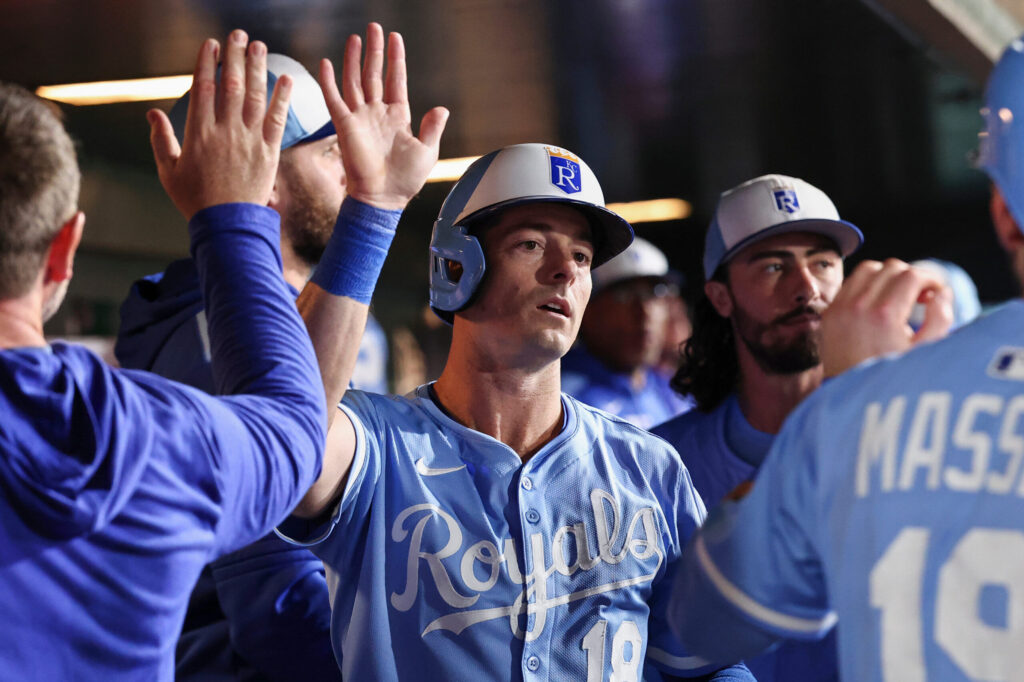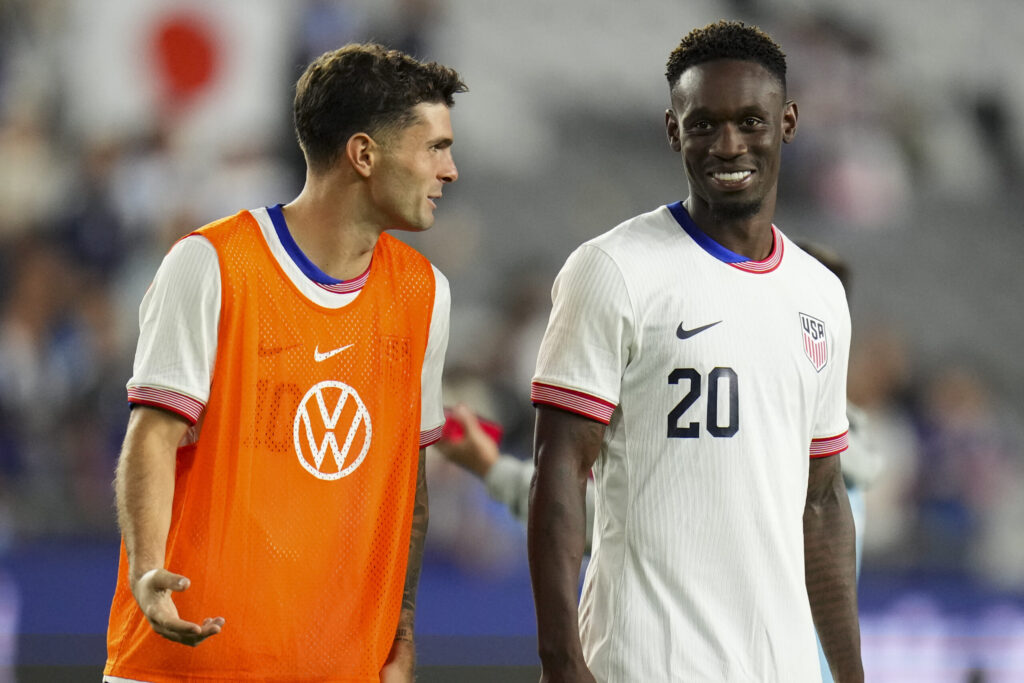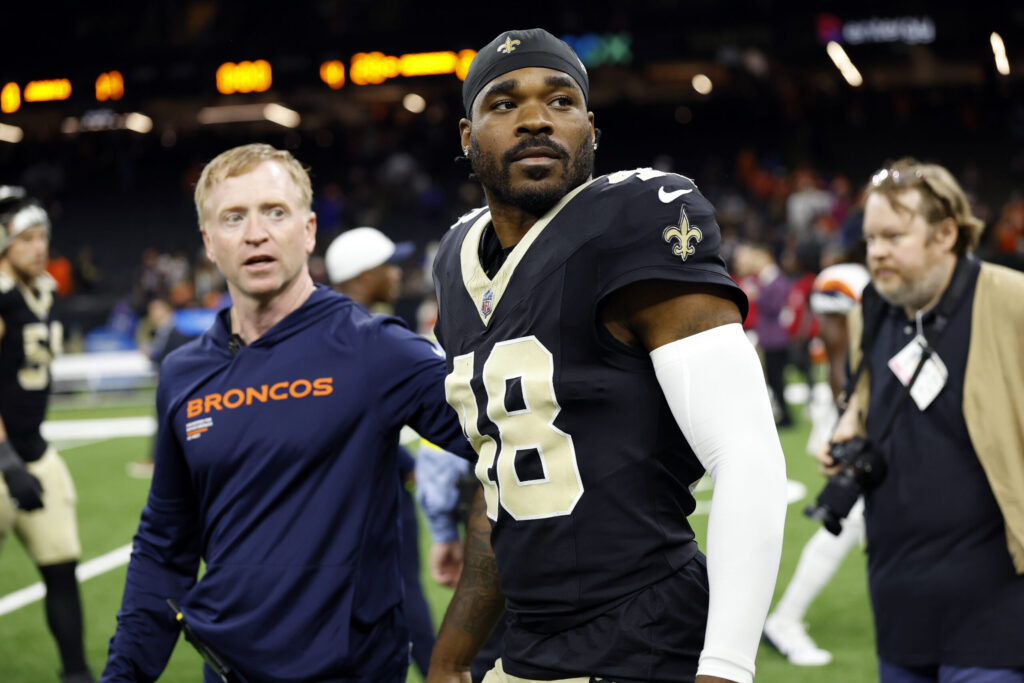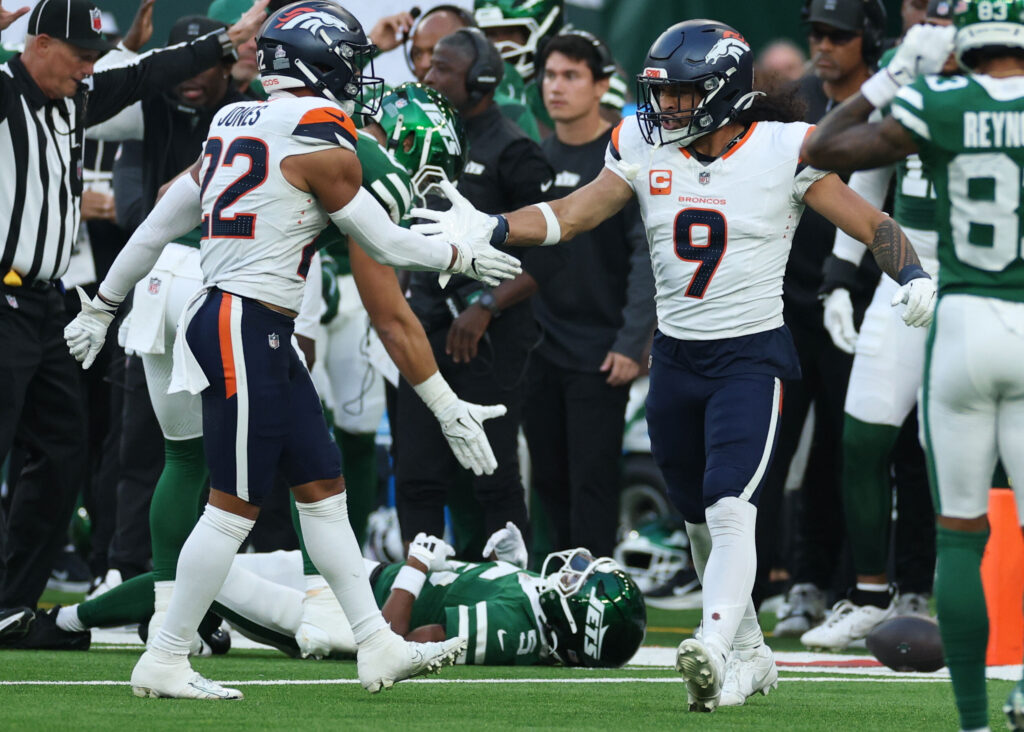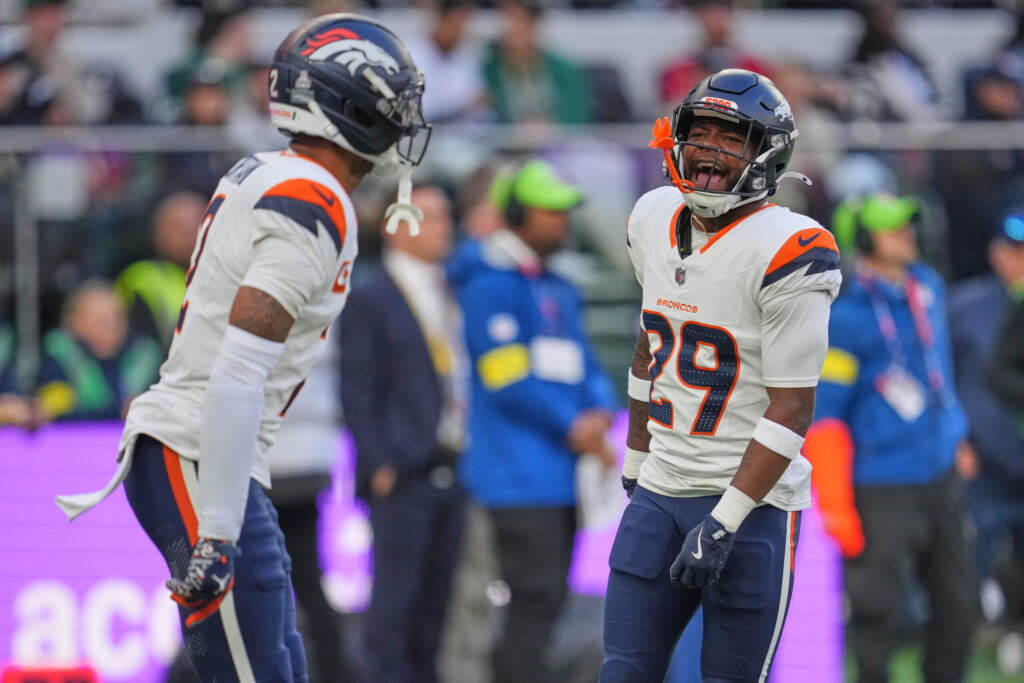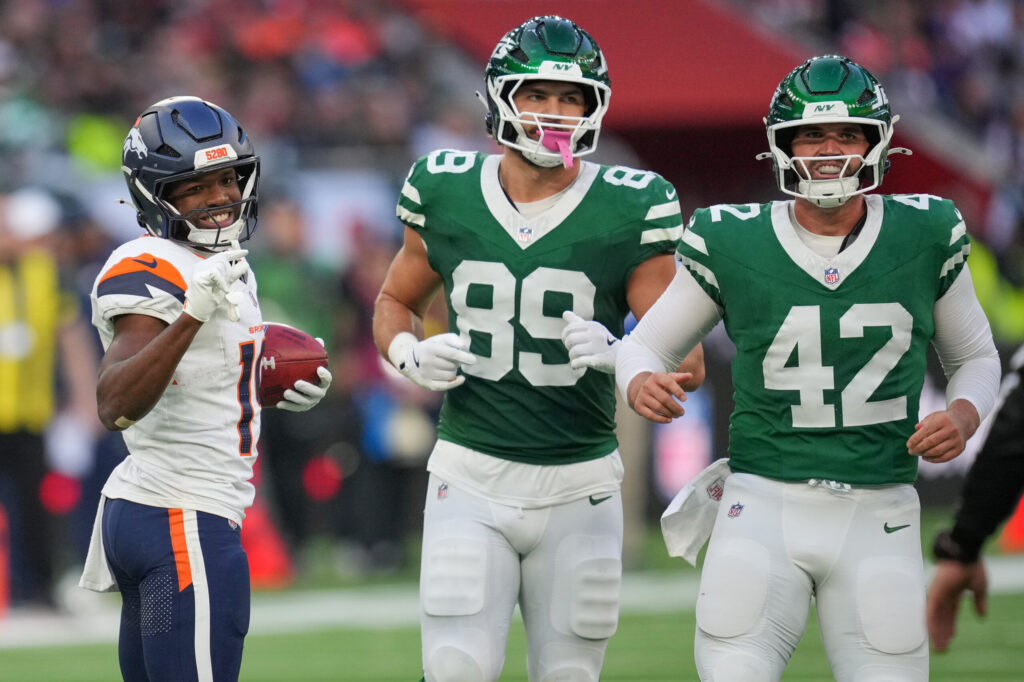After gaining fame for terrorizing foes, ex-Broncos star Rich ‘Tombstone’ Jackson says he’s actually ‘friendlier than anybody’
NEW ORLEANS – When Rich Jackson used to walk down the street in Denver, pedestrians would scatter. That’s how imposing the man nicknamed “Tombstone” was.
Jackson wreaked havoc while playing defensive end for the Broncos from 1967-72. He was first-team All-Pro in the AFL in 1968 and 1969 and in the NFL in 1970 before a knee injury suffered in 1971 derailed his career.
The 6-foot-3, 255-pound Jackson threw terror into opposing offensive linemen with his head slap, double head slap and head butt before those moves were banned by the NFL following his career. In a 1971 game against Green Bay, he broke the helmet of Packers tackle Bill Hayhoe with a head slap.
Apparently, the fear of Jackson extended to when he was off the field.
“I would be walking the streets of Colorado and people coming down the street, they would go to the other side,’’ Jackson said in an interview at his New Orleans home. “People were really frightened of me. They would say, ‘That’s Tombstone.’ They must have thought I was a monster.”
Jackson, 83, laughed when recounting such tales. After all, he said he wasn’t anything off the field like he was on it.
“I wouldn’t even kill a fly, man,’’ he said.
Jackson still looks intimidating with his bald head and Fu Manchu beard. But he has lived quite a different life in the past 50-plus years from the persona he once had.
Until Hurricane Katrina hit New Orleans in 2005, and Jackson retired, he was a longtime social studies and physical education teacher at several New Orleans high schools, including alma mater L.B. Landry. Many of his students didn’t know that their laid-back teacher who holds a master’s degree in education had once played football.
“Some of them looked it up and they were in disbelief,’’ Jackson, who also played with the Oakland Raiders as a rookie in 1966 and finished his career with a 10-game stint for the Cleveland Browns in 1972, said of students seeing old films of him battering offensive linemen. I wasn’t no rinky-dink ballplayer.”

Former Denver Broncos star defensive end Rich “Tombstone” Jackson with his wife Katherine at their New Orleans home on Oct. 17, 2024. Jackson played for the Broncos from 1967-72. Photo by Chris Tomasson, Denver Gazette.
Jackson has been married to Katherine Jackson since 1977. She got to know him when he was a teacher and only heard of his career as a menacing defender.
“He’s always telling me how tough he was, and I just take his word for it, and seeing films of him playing and stuff like that,’’ she said.
She calls her husband a “gentle giant” and agrees he wouldn’t hurt a fly.
Jackson, who has had his left knee replaced, his right hip replaced and has had a number of other ailments, doesn’t get around that well anymore. But he doesn’t deny he once was quite an imposing figure.
“Physically, I’m nothing compared to what I used to be,’’ he said. “I was about 52 (inches) in the chest and 19 in the arms and 34 in the waist. Not too many people had that kind of physique. I bench pressed over 500 pounds; I deadlifted over 600 pounds. I squatted over 600 pounds.’’
There is one noticeable remnant, though, that remains from Jackson’s playing days. On his left bicep, he has a tattoo that reads, “Stone.”
Jackson got the tattoo when he was playing at historically Black Southern University in Baton Rouge, La., in the early 1960s, calling it something “crazy” to do. It was a nod to the nickname he had gotten when starring at then-segregated Landry High School in the late 1950s.
“My high school was next to a graveyard and a portion of that graveyard became a portion of our football field,’’ Jackson said. “I guess being called Tombstone was due to my style of play and the reputation I had. Tombstone is the termination of life. a symbol of death, the end of the road.”
Jackson was happy to have that reputation if it meant getting an edge on the football field. He was a great athlete in high school, which included him running the 100- and 220-yard dashes and throwing the shot put, discus and javelin on the track team. He once ran the 40-yard dash in 4.5 seconds.

Former Denver Broncos star defensive end Rich “Tombstone” Jackson shows at New Orleans home on Oct. 17 2024 a picture from his playing days. He played for the Broncos from 1967-72. Photo by Chris Tomasson, Denver Gazette.
In an era when major colleges in the South weren’t recruiting Black players, Jackson could have gone to a school in the North, but he wanted to stay close to his New Orleans home and attended Southern, 80 miles up the road. For the Jaguars, he played outside linebacker, split end and tight end.
Despite an impressive college career, Jackson wasn’t selected in either the 1966 NFL or AFL draft. At that point, he wasn’t counting on playing pro ball.
“I wanted to go into education,’’ said Jackson, who would later earn his master’s degree and would start on a doctoral degree at Southern that he didn’t complete. “I wanted to become a professor. I always had a thirst for knowledge.”
But a scout convinced Jackson to sign as a free agent with the AFL’s Raiders, and they put him at linebacker. Jackson got into just five games as a rookie, playing mostly on special teams.
Before the 1967 season, Jackson was traded to the Broncos, the worst team in the AFL, along with guard Dick Tyson and linebacker Ray Schmautz for wide receiver Lionel Taylor and offensive lineman Jerry Strum. Taylor had starred for Denver in the early 1960s but by then was 32 and on the downside of his career. He ended up being cut by the Raiders before the season started and finished his career with two uneventful years with the Houston Oilers.
“The Broncos sure got the better end of that trade,’’ Taylor said with a laugh.
The late legendary owner of the Raiders, Al Davis, pulled the trigger on the deal.
“Al Davis didn’t want to trade me to a good team so that I would come back and be a thorn in their side,’’ Jackson said. “Of course, I gave them nightmares every time we played them.”
When Jackson arrived in Denver, the Broncos shifted him to defensive end in order to take advantage of his speed. The move ended up being pivotal to his career.
“We knew he was going to be good when they moved him from linebacker to defensive end to be able to get more pressure on the offense,’’ said Al Denson, a Broncos receiver from 1964-70. “It didn’t take him long before he was the best in the league.”
Sacks weren’t an official statistic until 1982, but ProFootballReference.com has studied film and summaries of games played before then and come up with figures. Jackson was credited during 14-game seasons with 4 ½ sacks in 1967 and then during his heyday with 10 ½ in 1968, 12 ½ in 1969 and 10 in 1970 in the first season of the NFL-AFL merger.
Jackson, credited with 45 sacks in 82 games in his seven-year career, doesn’t fully agree with those statistics, saying he believes he averaged a sack per game during his prime seasons. Opposing teams double- and triple-teamed him but he still was able to wreck game plans.
“Any time you have a ball player that has two or three people blocking him, there must have been something that was unreal about his talent,” Jackson said.
Although Los Angeles Rams Hall of Fame defensive end Deacon Jones has been credited by many to be the originator of the head-slap move, Jackson begs to differ.
“I invented the head slap. It started in practice when we had a guy Mike Current,” Jackson of the late tackle who played for Denver from 1967-75. “I used to practice it against him. Sometimes he was so beaten up he couldn’t even perform on game day.
“If I hit you on the helmet on the left side, you reacted that way. If I hit you on the right side, you reacted that way. And then there was the double-headed slap, and you didn’t know which way I was going. And then there was the head butt. If I hit you with that, it was Katy bar the door.”
In a 1971 game against the Packers in Milwaukee, Jackson hit Hayhoe so hard it cracked his helmet. Hayhoe was listed at 6-foot-8, 258 pounds, and Jackson said he needed his moves to combat bigger players.
“I did what I felt I had to do,’’ Jackson said. “I wasn’t as big as some of those guys I went against, and I had to have some tools in order to defeat those guys. I wasn’t trying to hurt anyone.”
Jackson’s Denver tenure came when the Broncos, founded in 1960, didn’t get much publicity. They were rarely on national television, being a team that never had a winning season until 1973. They didn’t play in a major media market.
Legendary late football writer Paul Zimmerman did give Jackson some publicity when he wrote glowingly about Jackson in his book “A Thinking Man’s Guide to Football,” published in 1972. And when Zimmerman chose an all-time NFL team for Sports Illustrated in 1999, he named Jackson as one of his defensive ends.
“He was the best defensive lineman I ever saw,’’ said Billy Van Heusen, a wide receiver and punter for the Broncos from 1968-76. “He controlled the line of scrimmage even though he always had a couple of people on him. Nobody was left alone to block him because they couldn’t do it. He was a force. ”

Unfortunately for Jackson, his career was cut short by injury, the primary reason he never has advanced far in consideration for the Pro Football Hall of Fame. On Oct. 31, 1971, with the Broncos playing at Philadelphia in Week 7, he was clipped by an Eagles player and went down with a season-ending left knee injury.
Jackson returned for the 1972 season but wasn’t the same player. After four Denver games, he was traded to Cleveland, where he played the final 10 games of the season. Jackson went to training camp with the Browns in 1973 before deciding to retire.
“Mentally, I knew what to do, but physically I wasn’t 100%,’’ said Jackson, who would return to Denver when named in 1984 a charter member of the Broncos’ Ring of Fame. “I got to the point where I just didn’t need it anymore. I was just appreciative that I was able to play as long as I did, and I didn’t look back. On the day I retired, I took a job with the Orleans Parish School system. I got on the phone with them and said I was going to retire and would come on down.”
As a school teacher, Jackson moved into a life far different than football. He said he “didn’t want to shortchange his students” and worked very hard at his craft. He made a point to wear long-sleeved shirts in class to cover his “Stone” tattoo.
Jackson doesn’t watch football much anymore, saying “the NFL now is like tiptoeing through the tulips in the garden.” He doesn’t keep up that much with former Broncos teammates but he does with some of his former students.

A trophy case at the New Orleans home of former Denver Broncos star defensive end Rich “Tombstone” Jackson displays awards he has won. Jackson played in the pros from 1966-72, including 1967-72 with the Broncos. Photo by Chris Tomasson, Denver Gazette.
“One of the things I admire the most about him was that he was really dedicated to his students,’’ said Katherine Jackson. “Even now, we’ll go back out in the community and run into former students and stuff. They’ll come up to him and say, ‘Thank you, Mr. Jackson,’ because he was fair, but he was firm (as a teacher). He was determined that they would get a good education.”
To his students, he was “Mr. Jackson.” His wife calls him “Richard.” It was long ago that Jackson was known as “Tombstone” for terrorizing foes on the field.
“It’s like a light switch that goes on and off,’’ Jackson said. “I guess I was Tombstone on the field and Rich Jackson off it. I wasn’t a villain off the field. I’m friendlier than anybody in the world.”
That’s how many teammates remember him.
“On the field, he would be swinging his arms and cussing out the offensive tackle, yelling, ‘Don’t hold me,’’’ said Bobby Anderson, a Broncos running back from 1970-73. “He was famous for that powerful head slap and intimidating people. … Off the field, he was very pleasant, a good communicator, very friendly.”
And at least now in New Orleans, when Jackson walks down a street, pedestrians don’t flee to the other side.






